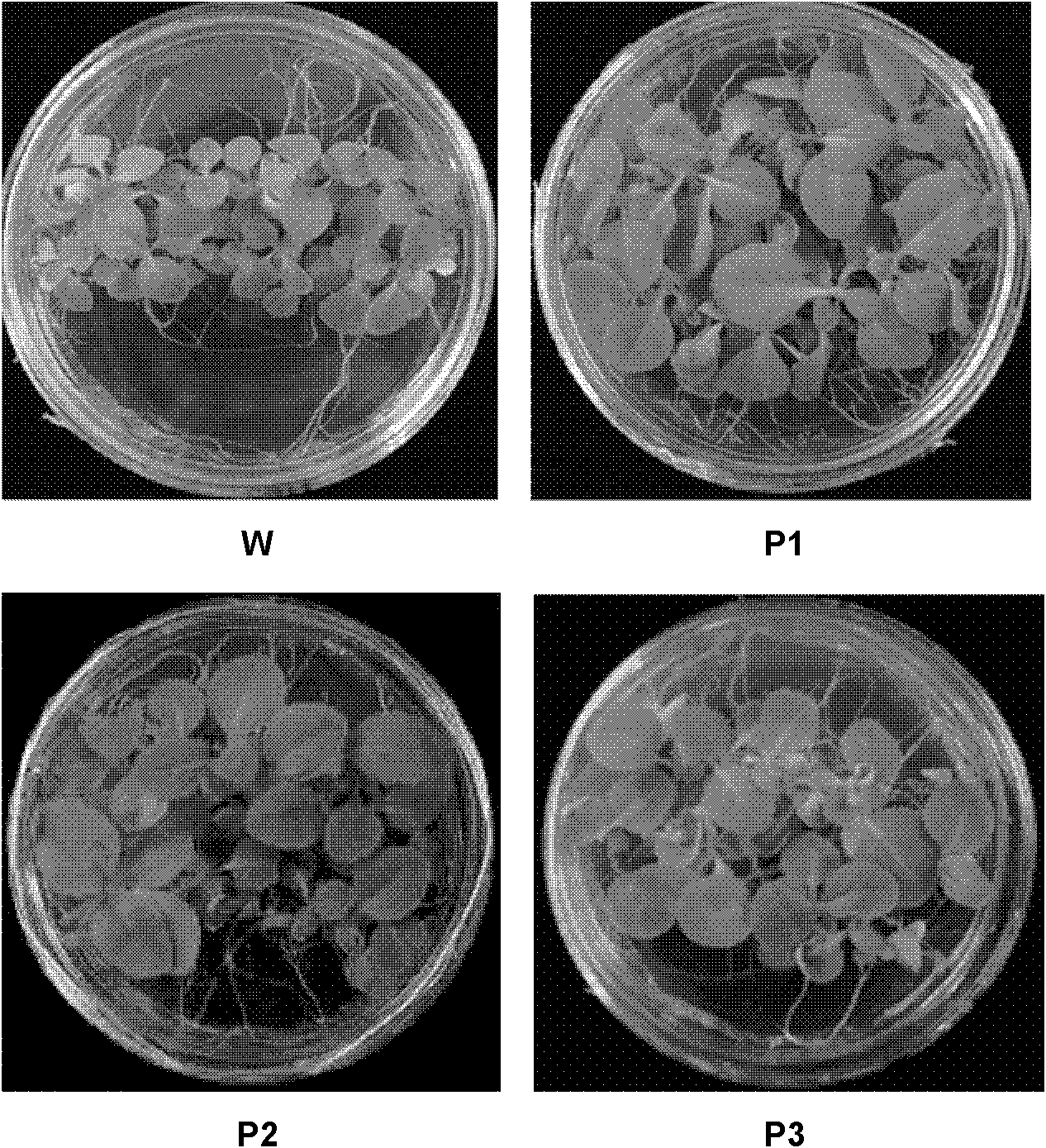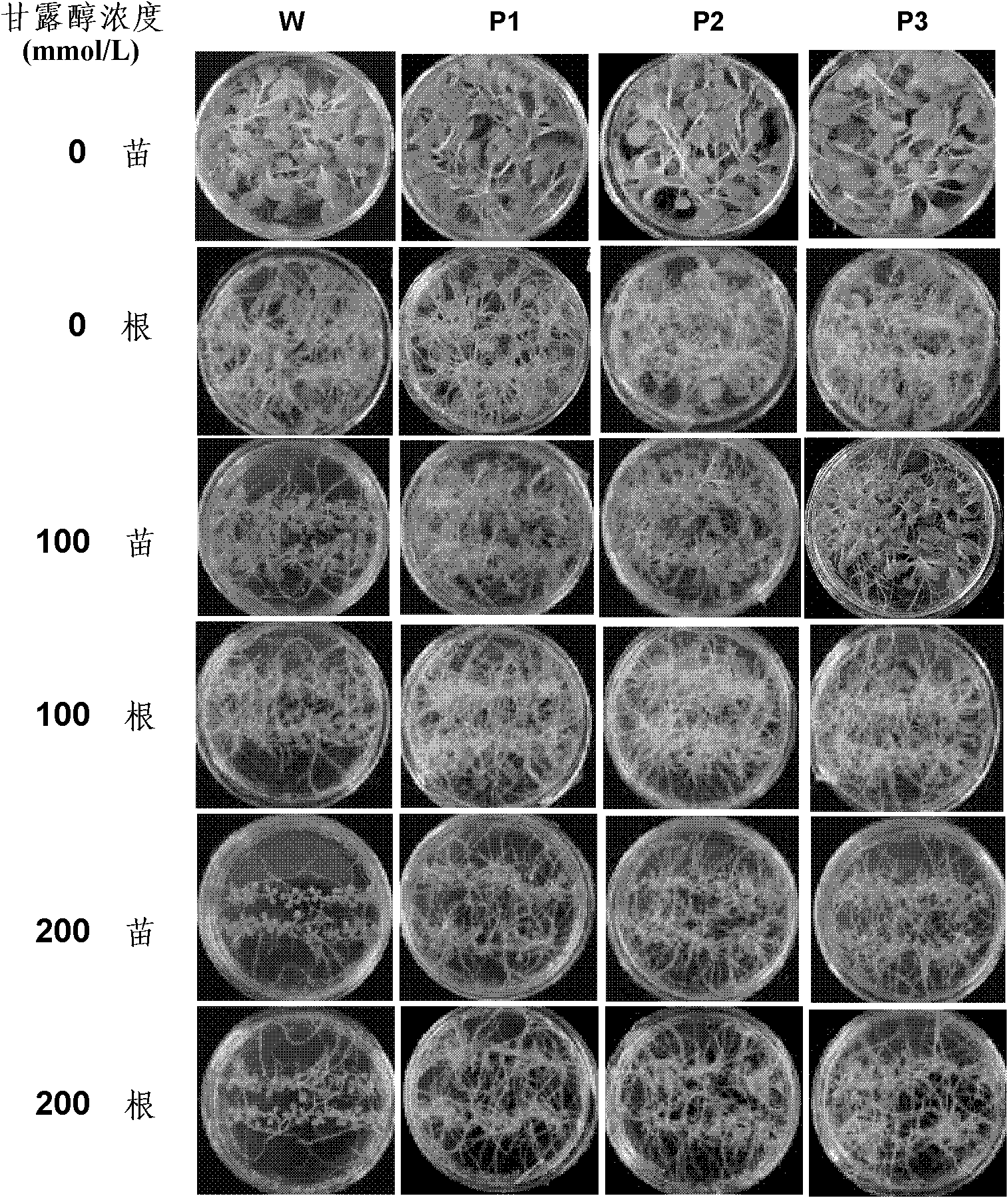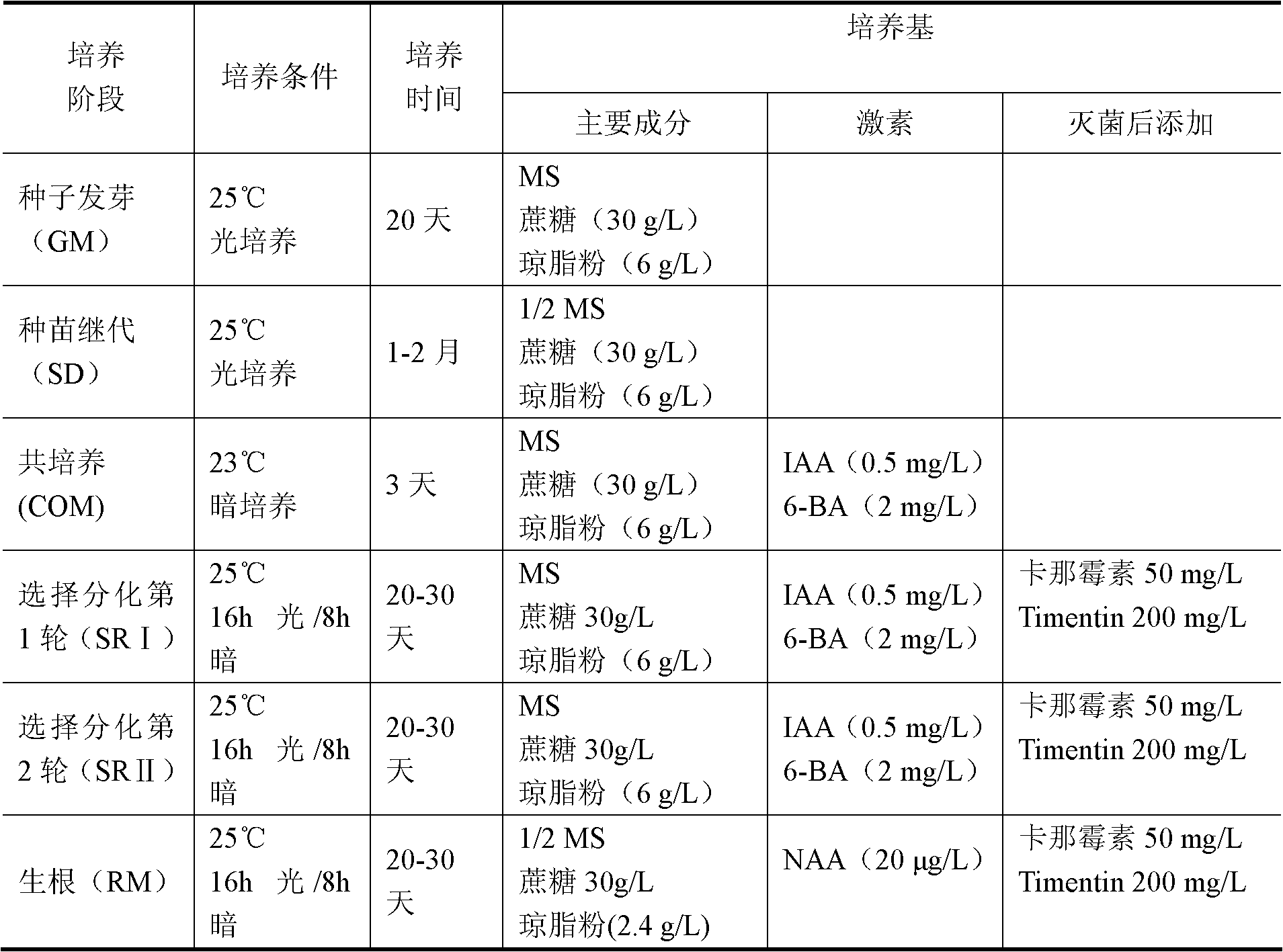Method for culturing anti-stress transgenic plants by using gene CYP710A11
A CYP710A11, transgenic plant technology, applied in the field of genetic engineering, can solve the problems of slow effect, long period of stress-resistant varieties, etc.
- Summary
- Abstract
- Description
- Claims
- Application Information
AI Technical Summary
Problems solved by technology
Method used
Image
Examples
Embodiment 1
[0033] Example 1 Isolation and Cloning of CYP710A11 Gene
[0034] Tomato (Solanum lycopersicum) Mill.cv.Ailsa Craig was sown in pots and cultivated in a greenhouse. The seedlings grown for 2-3 weeks were used as test materials. Total RNA was extracted from tomato seedlings with Trizol kit (Invitrogen), and cDNA was synthesized with reverse transcription kit (TaKaRa).
[0035] According to the sequence shown by the accession numbers AB223043 and EU224275 of the CYP710A11 gene in the GenBank database, the open reading frame and restriction site of the sequence were analyzed, and primers were designed and synthesized using Primer 5.0 software. Add corresponding enzyme cutting sites at both ends of the start codon and stop codon for vector construction. AB223043 was cloned from tomato by Morikawa T et al [Morikawa T. et al, 2006], EU224275 was obtained from tomato cultivar Rutgers by Whitaker BD and Gapper NE [WhitakerBD and GapperNE, 2008].
[0036] Amplification primers are as...
Embodiment 2
[0041] Example 2ABA-induced CYP710A11 gene expression analysis
[0042] Tomato (Solanum lycopersicum) Xiaokang No. 2 seeds (purchased from Chengdu Kenong Industrial Co., Ltd.) were sown in pots and cultivated in a greenhouse. The seedlings grown for 2-3 weeks were used as test materials. The test was divided into 2 groups. One group sprayed leaves with 2mg / L ABA; one group sprayed leaves with water as a control treatment. There were 3 replicates in each treatment group, with 10 seedlings in each replicate. After 24 hrs, the leaves were taken, RNA was extracted (Trizol kit, Invitrogen) and reverse-transcribed (Reverse Transcription Kit, TAKARA) to synthesize a cDNA template.
[0043] The conserved Actin gene in plants was selected as an internal reference gene, and the amplified fragment was about 180bp, and the primers used were:
[0044] ACT-F: 5'GGGATGATATGGAGAAGATA 3'
[0045] ACT-R: 5'AGTACAGCCTGAATAGCAAC 3'
[0046] Fluorescent quantitative primers were designed acco...
Embodiment 3
[0050] Example 3 Construction of tomato CYP710A11 gene plant overexpression vector
[0051] The vector pMD18-T-CYP710A11 obtained in Example 1 containing the CYP710A11 gene was constructed into the plant expression vector p2355 [Ma Xinrong, 2008] after corresponding double digestion with BamH I and Kpn I and ligation with T4 ligase (NEB) , named p23-CYP710A11. Plasmid p2355 was constructed by our laboratory on the basis of pCAMBIA2301 (licensed by CAMBIA), with a length of 12577bp, a kanamycin resistance gene and a GUS marker gene; it contains a promoter, a terminator unit, and a multiple cloning site in between region, where foreign fragments are inserted. The constructed vector p23-CYP710A11 was introduced into Agrobacterium tumefaciens EHA105 by freeze-thaw method and stored in liquid nitrogen.
PUM
 Login to View More
Login to View More Abstract
Description
Claims
Application Information
 Login to View More
Login to View More - R&D
- Intellectual Property
- Life Sciences
- Materials
- Tech Scout
- Unparalleled Data Quality
- Higher Quality Content
- 60% Fewer Hallucinations
Browse by: Latest US Patents, China's latest patents, Technical Efficacy Thesaurus, Application Domain, Technology Topic, Popular Technical Reports.
© 2025 PatSnap. All rights reserved.Legal|Privacy policy|Modern Slavery Act Transparency Statement|Sitemap|About US| Contact US: help@patsnap.com



